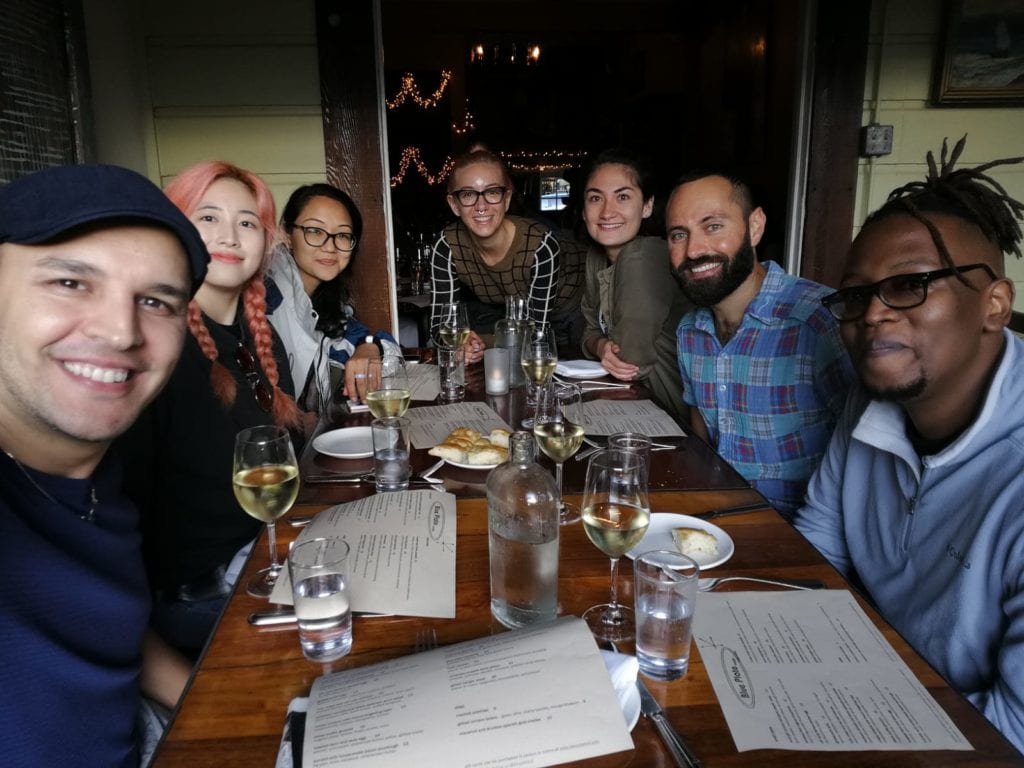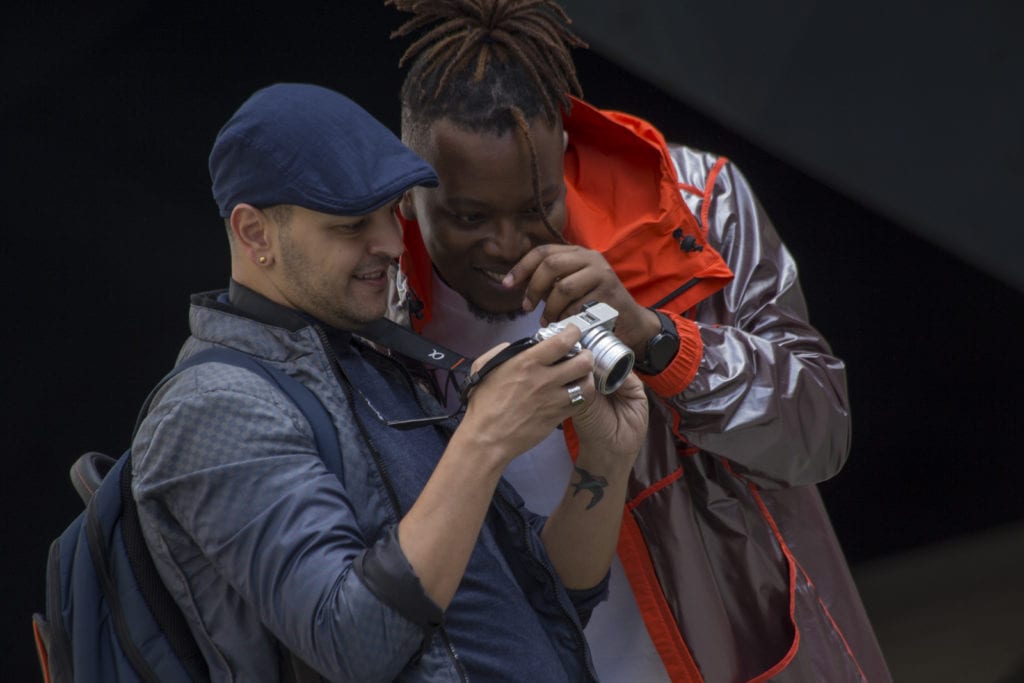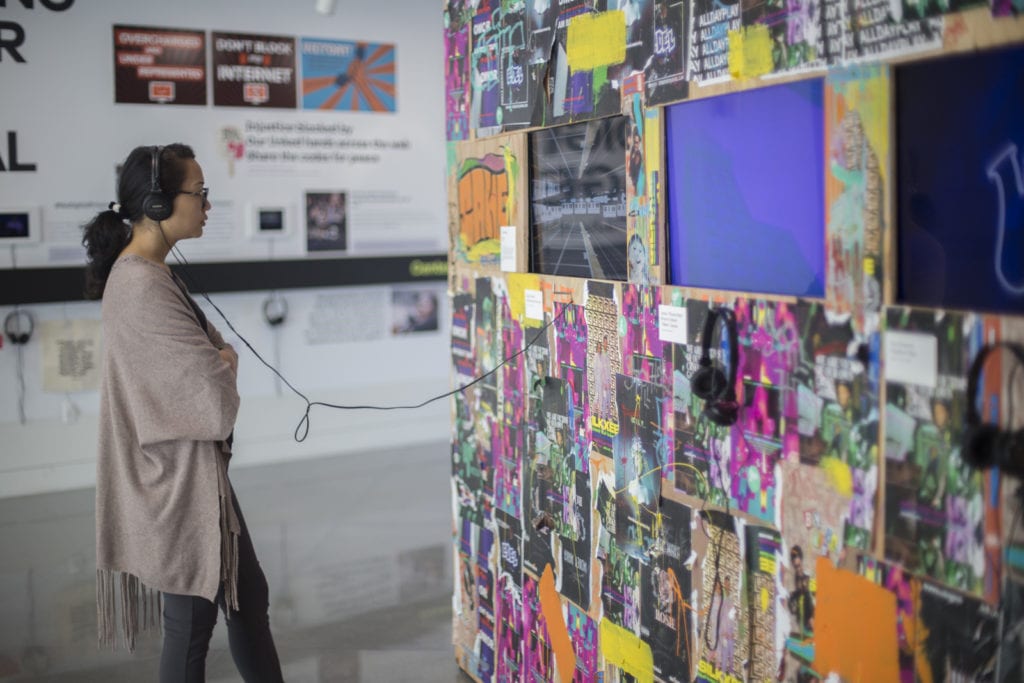Group shot of Amplify 2019 participants. Photo by Shamsher Virk.
This past month, we completed our second annual summer exchange program, American Arts Incubator — Amplify. Six promising emerging leaders, Eloy Monter Hernández, Minju Do, Reginald Nkululeko Sedibe, Ahmet Rüstem Ekici, and Rashana Bajracharya (left to right in photo above) were selected from the AAI 2019 international incubators to join us in San Francisco for a 10-day professional development experience.
Through Amplify, these socially-engaged creatives from Mexico, Nepal, South Africa, South Korea, and Turkey connected with Bay Area peer mentors, participated in a critical art-making symposium at the San Francisco Art Institute, engaged with Suzanne Lacy’s social practice work at YBCA and SFMOMA, completed creative development workshops, learned about data visualization and digital storytelling from the Anti-Eviction Mapping Project, and spoke at the Gray Area Festival on the theme of immersive design.
We’d like to share some excerpts from their reflections and takeaways from Amplify 2019:

“When I read the biographies of the well-known artists, I adore the sentences about how they lived in different cities during some era of their life and how it affected their artistic approach. Even though I didn’t spend a long time in San Francisco, I am so honored to be part of AAI programme by ZERO1 where I felt so free to express my feelings and identity without judgement. Art has a new language in the new era of social connectivity, technology and in terms of how we create it. AAI helped me to find new ways to tell and adapt my stories. I feel so lucky if one day someone writes a biography about me, I am sure it will be so visible when they look at my art to see how AAI and ZERO1 family changed the way I create my art.” — Ahmet Rüstem Ekici

“Cultural exchange. Staying constantly in a creative environment strengthens projects significantly. Living these ten days with artists from other countries and knowing the experiences of American artists made me learn about other cultures and how cultural identity is transmitted through art and technology.
Professional development. Through the training and experiences exposed during the Gray Area Festival I learned that immersion projects can favor the work of spreading the cultural heritage of my country, Mexico, with tools such as photogrammetry and immersive design.
Design matters. After the review of portfolios by Niki Selken and my mentor Shihan Zhang, I received many tips to improve the way I disseminate my work and after applying them I have managed to see the changes and improvements in personal digital media.
Personal growth. This experience was not only an accumulation of knowledge, one of the greatest reasons that made this a formidable experience are the wonderful people who stay in your life forever (Maya, Shamsher, Reggie, Rashana, Rüstem, Minju and Samantha).
My infinite thanks to the American Arts Incubator and the United States Embassy, especially to Maya Holm, Shamsher Virk and Elizabeth Andión.” — Eloy Monter Hernández

“The approach to my artistic practice is shifting dramatically as I have begun to synthesise some of the information I acquired in San Francisco. I look forward to sending […] what I am working on as I continue on this journey.” — Reginald Sedibe

“‘Traveling overseas will help you grow,’ is something that I keep hearing and reading all the time but I had never imagined that traveling even just for a short time could be so impactful, especially to me as I used to think that I am really slow at grasping anything. But this is so strange that without being aware I actually have gained ability to perceive so many things here now in a different way than I used to.
I thought about the power of technologies and responsibility of an artist. How learning is more efficient and fun by experiencing it, rather than just reading. With the help of new technologies like AR,VR and MR one can actually create an immersive space where anyone can explore and learn efficiently as they will get a complete experience and their whole sensory organs will help them learn in a more efficient manner. Thus, such powerful tools actually should be used wisely to develop human connection rather than as a tool of distraction, and as an artist it’s our responsibility to create something which can serve mankind in a positive way.” — Rashana Bajracharya

“During the Gray Area Festival, I was thinking about the theme ‘Immersive design,’ with the lectures I had in AAI Amplify program during the festival. Why is ‘immersive design’ the subject we focus on? My answer is this. If I can imply the urban issues we face, it is ‘immersive.’ What we want the most is to get along each other who are different and diverse from each other. That means, we want to merge into the each one’s world. If I can express in artistic ways (it could also be in political ways), it is called ‘immersive design’.
Also, ‘immersive design’ is the latest technique for now. Looking back in history, art was an example of entertaining people adapted with latest techniques. This medium is about creating sensory experiences. It invites the audience to the art piece, not just acting as ‘witness,’ but making them a part of art. It leads people merge into another society. This issue is directly related to social issues what we should deal with.
AAI — Amplify program made me certain that my concern was not just useless worries. I was not the only one who was concerned about the roles of the artist in society.” — Minju Do
*Text has been edited for length and clarity.

